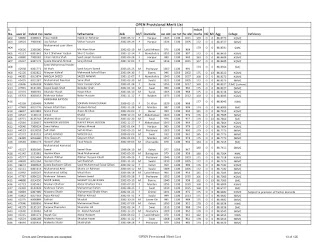CHAPTER NO.8 ACIDS, BASES AND SALTS
1.
|
Unit
of Kw is
a.
Mol dm-3
b.
Mol-2 dm-6
c.
Mol2 dm-6
d.
Non of these
|
C
|
2.
|
Conjugate
acid base pair differs by
a.
A proton
b.
A proton pair
c.
An electron
d.
An electron pair
|
A
|
3.
|
1M
solution of Ca(OH)2 is mixed with 1M solution of HCl. The solution
formed is
a.
Acidic
b.
Basic
c.
Neutral
d.
amphoteric
|
B
|
4.
|
Cl-
is the conjugate base of
a.
AlCl3
b.
NaCl
c.
HCl
d.
KClO3
|
C
|
5.
|
pH
of an aqueous solutions ,its pOH is
a.
11
b.
9
c.
7
5
|
D
|
6.
|
Salt
of a weak base and strong acid has pH , approximately
a.
8
b.
6
c.
7
d.
9
|
B
|
7.
|
Very
large Ka value means that the solution is
a.
Strong acid
b.
Weak acid
c.
Weak base
d.
Strong base
|
A
|
8.
|
A
solution with pKa = 9, is
a.
Strong acid
b.
Weak acid
c.
Weak base
d.
Strong base
|
B
|
9.
|
Example
of buffer solution is
a.
HCl/NaCl
b.
NH4 OH/NH4 Cl
c.
NaOH/H2 CO3
d.
Non of these
|
B
|
10.
|
Which
one of the following is strongest acid
a.
HF
b.
HCl
c.
HBr
d.
HI
|
D
|
11.
|
An
anoin is a/an
a.
Acid
b.
Base
c.
Amphoteric
d.
none
|
B
|
12.
|
which
one of the following statement is false for the acids that they
a.
liberate H
b.
accept electrons
c.
have high pH
d.
turn blue litmus red
|
C
|
13.
|
10-3
moles of HNO3 is dissolved/L. its pH is
a.
-3
b.
5
c.
3
d.
1
|
C
|
14.
|
strong
acid and weak base make the solution
a.
Acidic
b.
Basic
c.
Neutral
d.
Acidic, basic, neutral
|
A
|
15.
|
Salt
derived from a strong base and weak acid make the solution
a.
Acidic
b.
Basic
c.
Neutral
d.
Acidic, basic, neutral
|
B
|
16.
|
Salt
derived from a strong acid and strong base make the solution
a.
Acidic
b.
Basic
c.
Neutral
d.
Acidic, basic, neutral
|
C
|
17.
|
Salt
derived from a weak acid and weak base make the solution
a.
Acidic
b.
Basic
c.
Neutral
d.
Acidic, basic, neutral
|
D
|
18.
|
If
a base dissolves in water it is called an
a.
Acid
b.
Base
c.
Amphoteric
d.
Alkali
|
D
|
19.
|
A
weak acid has is a
a.
Strong conjugate base
b.
Strong conjugate acid
c.
Weak conjugate base
d.
weak conjugate acid
|
A
|
20.
|
A
weak base has is a
a.
Strong conjugate base
b.
Strong conjugate acid
c.
Weak conjugate base
d.
weak conjugate acid
|
B
|
21.
|
pKw
=…. at 250
a.
0
b.
7
c.
14
d.
Non of these
|
C
|
22.
|
C.
the value pKw of decrease with
a.
Increase in temperature
b.
Decrease in temperature
c.
No impact with temperature
d.
Non of these
|
A
|
23.
|
Ka
x Kb =
a.
Kw
b.
1014
c.
Both a and b
d.
14
|
C
|
24.
|
pKa
+ pKb =
a.
Kw
b.
1014
c.
Both a and b
d.
14
|
D
|
25.
|
Which
one of the following is weak acid
a.
HI
b.
HBr
c.
HCl
d.
HCN
|
D
|








Comments
Post a Comment